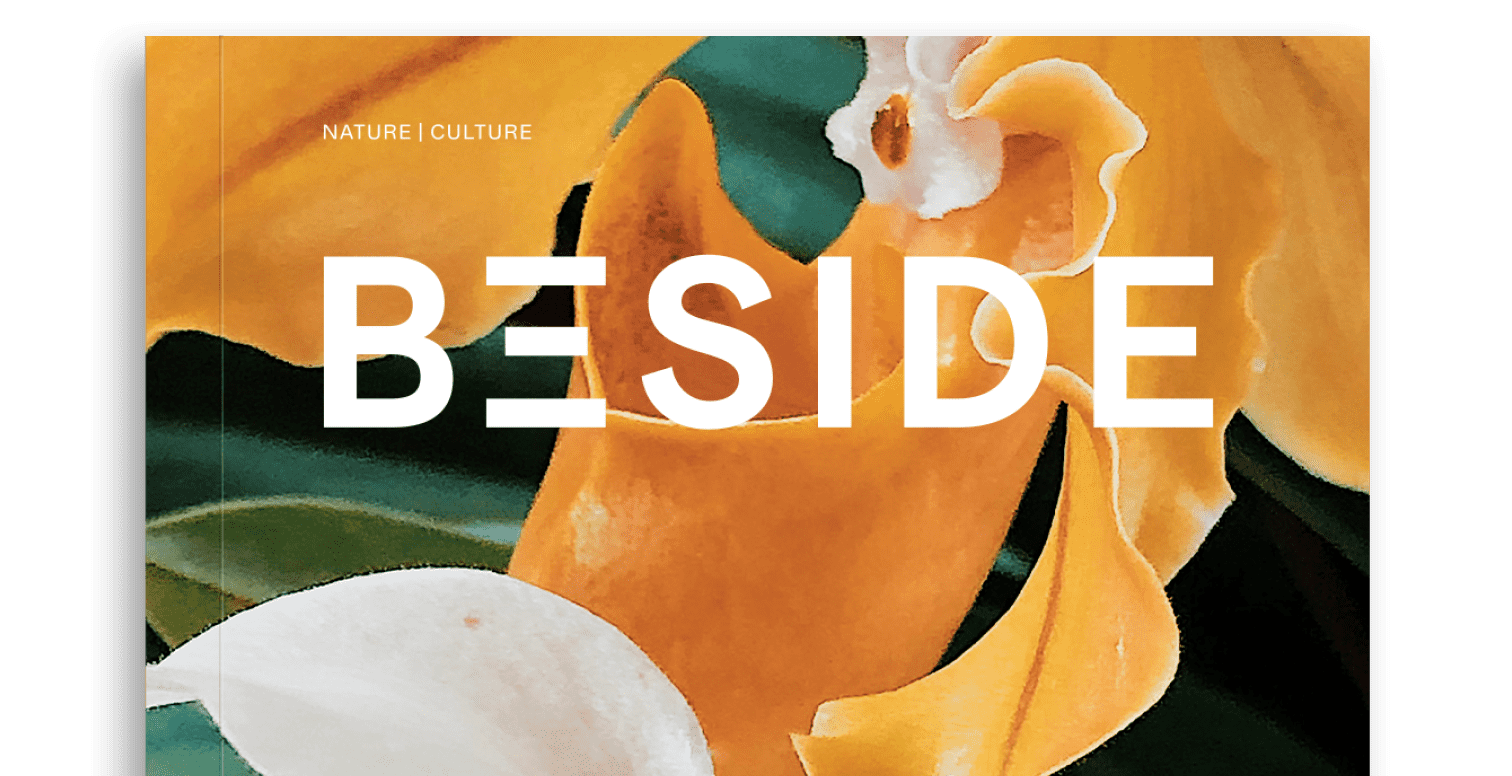
Prologue
Since Oliver moved into his new apartment in downtown Vancouver two months ago, he’s befriended a stuffed carrot and a stuffed hedgehog. On sunny afternoons, he likes to lounge on the balcony just outside the sliding doors; in the evenings, he explores new musical tastes—his own, and those of his housemates. “I’m a big fan of metal, and Oliver is not a fan,” says Carleigh Baker. “He really seems to like funk—Booker T. in particular.”
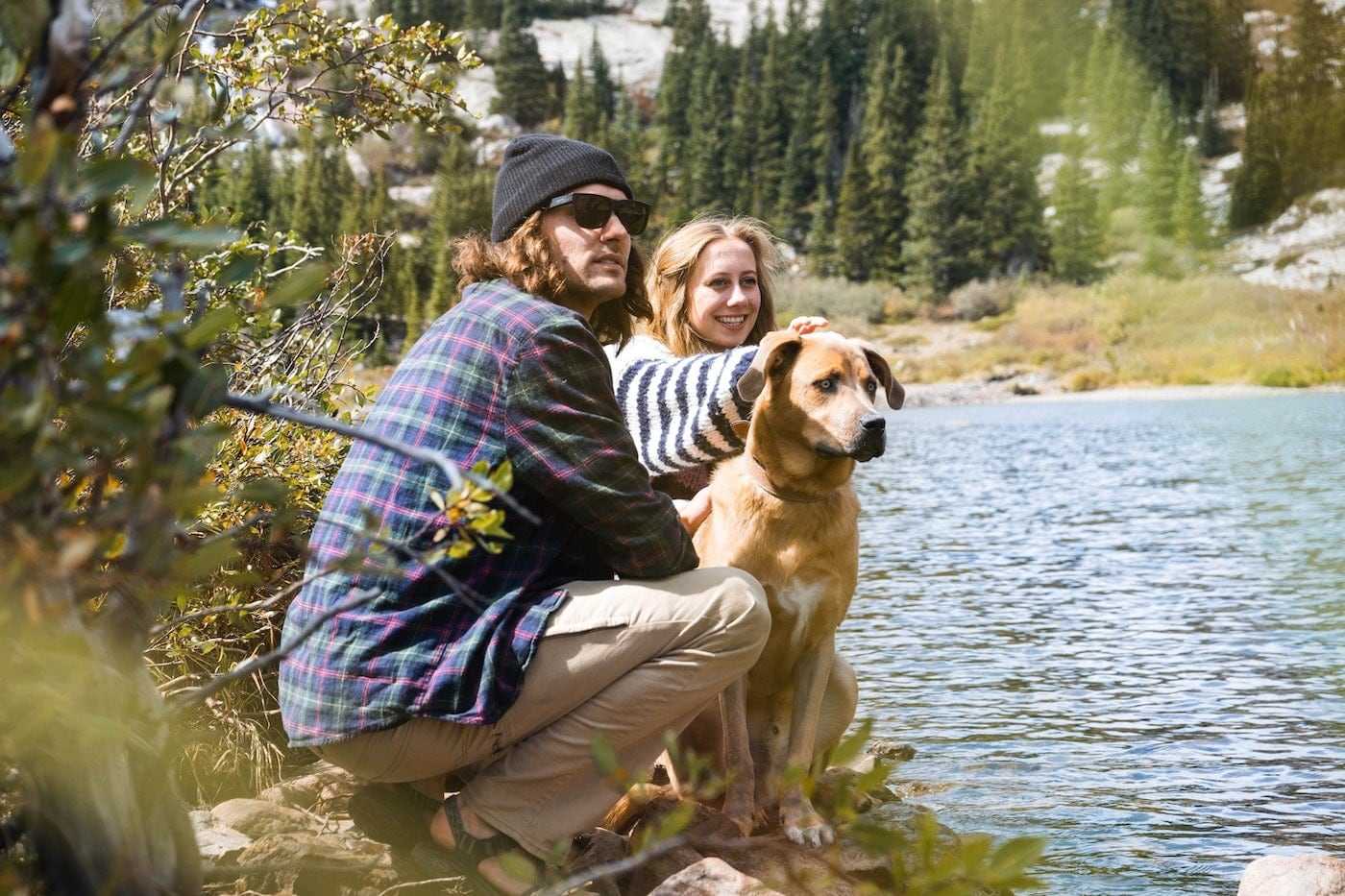

Oliver is a steely blue-grey rabbit, and Baker and her partner, Sean, love him. Legally, though, he is their property, and they have the right to determine how he lives and when he will die. “Convenience euthanasia,” as it’s called, isn’t forbidden by any veterinary code of practice, although vets may refuse to perform it. Baker isn’t legally obligated to provide liver with companionship or room to exercise, or to keep a half bale of hay in a Rubbermaid in her closet for his meals. She does these things because she wants to; a different owner might make different choices.
On the flip side, were Oliver to die suddenly of some other cause, the law would not require Baker’s employer to offer bereavement leave. In 2015 Chantal Dumais sued her Laval employer for “psychological harassment” when they refused to let her have a paid day off to grieve the death of her cat, Juliette. In 2018 a Québec labour tribunal ruled that Dumais was out of line. Juliette was not Dumais’ child, her partner, or her parent. Dumais may have regarded Juliette as a member of her family, but in the eyes of the law, Juliette was disposable. In a similar vein, a “dangerous dog” case recently came before the Canadian Supreme Court, in which high-profile animal law specialist Victoria Shroff argued that Punky, an Australian cattle dog, was not property but a sentient being, and euthanizing him was akin to the death penalty. Punky lost, and was put down at a Vancouver animal shelter.
Advances in cognitive science have underlined what the animal rights movement has long argued: that we share the world with more sophisticated beings than we realize.
From the normalization of veganism to the boom in ethical meat, to doggy daycare, how we talk about animals has shifted. Dalhousie University offered Canada’s first course on the subject 15 years ago, and 2019 marked the first national conference attended by lawyers, scholars, and activists all pursuing variations on the same agenda: legal recognition of the growing awareness of our moral responsibility toward animals. Advances in cognitive science have underlined what the animal rights movement has long argued: that we share the world with more sophisticated beings than we realize. Some legal scholars believe we may soon approach a tipping point in animal law.
But our emotional investments in animals of different species or in different contexts are capricious—the same person might play fetch with their dog, ride a horse, and eat a hamburger in the space of a single day. A few species, like rabbits, even play multiple roles: as pets, as meat, and as laboratory subjects. The legal system makes a distinction between property and personhood—animals, even in jurisdictions that acknowledge their sentience, are classified as property. The moral gridlock in animal law has come, some scholars argue, from an unwillingness to translate the ambiguity in human-animal relationships into a coherent framework that acknowledges a middle ground between categories. Is there a stop along the way between property and personhood?
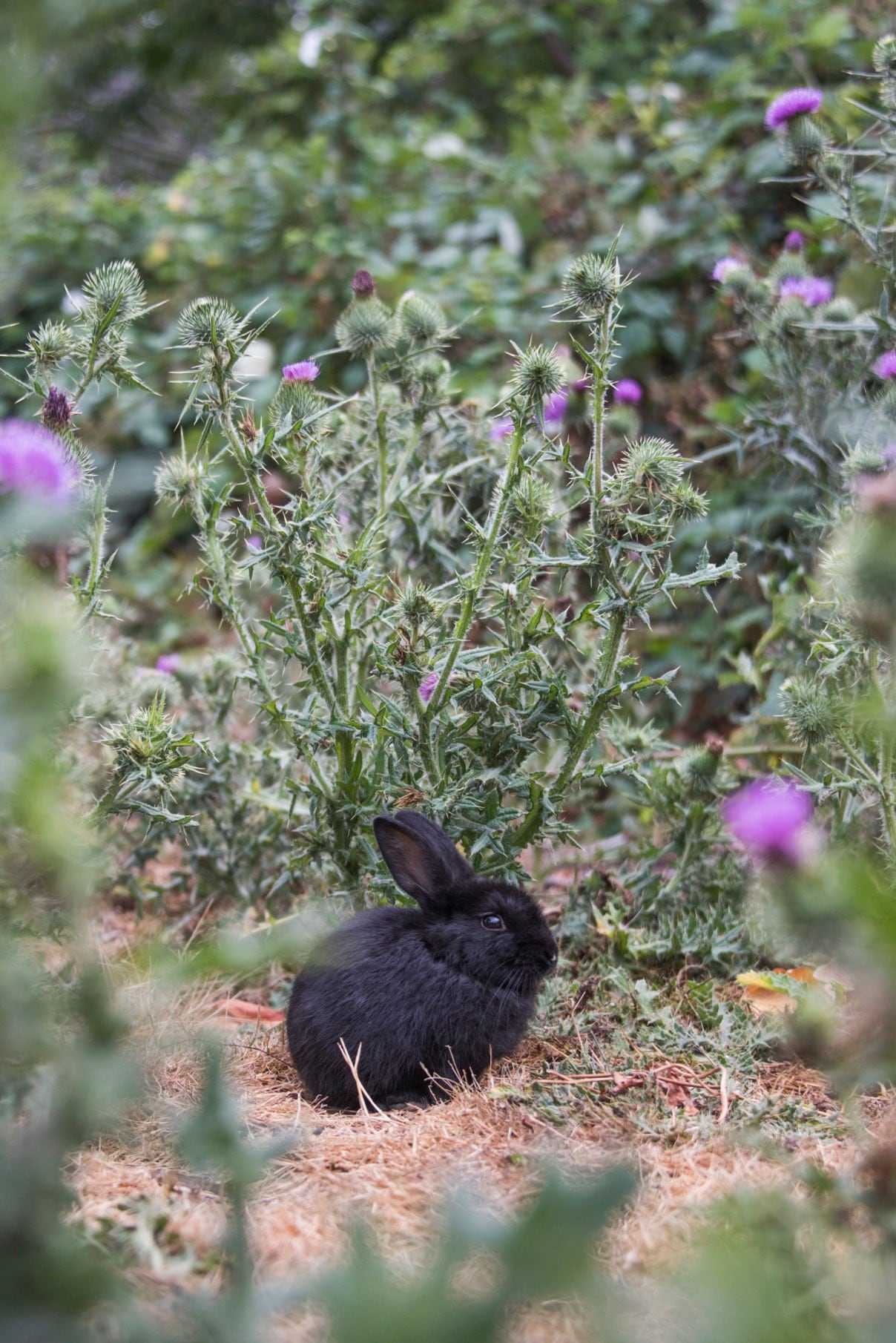
I lived with a rabbit once, in a Montréal apartment in the early 2000s. The couple who owned him didn’t like the idea of keeping him in a cage, but if they let him hop around the apartment he chewed through all the electrical cables. By the time I moved in, they had hit upon a solution: the rabbit lived in the bathroom. We kept the door closed at all times; if you needed to use the washroom, you had to dart in as quickly as possible and slam the door to keep the rabbit from getting out. The rabbit was smelly and aggressive. When I sat on the toilet or used the sink, he ran in circles around me and nipped at my ankles. I hated and feared him. In retrospect, someone should have intervened to save the rabbit from his misery and our cruelty. But no one did.
Clearly, not all rabbit owners love rabbits as much as Baker loves Oliver. In the early months of the pandemic, many people reached out for companion animals to help them through a dark time; shelters nearly emptied of dogs and cats. But impulsive pet purchases can lead to high rates of animal abandonment.
Vancouver has a deserted rabbit problem; colonies of ex-pet rabbits and their feral offspring have grown up by Jericho Beach and in Richmond. The season of abandonment tends to peak in July, when sleepy baby bunnies given in Easter baskets have grown into unruly creatures who gnaw the furniture, even though abandoning a companion animal is a federal crime that can carry a jail sentence of up to two years. In most municipalities, an owner who is no longer willing or able to care for an animal can “surrender” their pet to the city—in Toronto, where I live, it costs about $40 to surrender a rabbit.
Baker adopted Oliver after a Vancouver charity called Vancouver Rabbit Rescue and Advocacy found him abandoned. Because she rescued him, hard-line animal rights activists might just accept the moral basis for their relationship. Gary Francione and Anna Charlton, law professors at Rutgers with a specialty in animal law, have long argued that “domestic animal” should be a contradiction in terms. The case against pets is that they can never experience autonomy. “They remain perpetually in a netherworld of vulnerability, dependent on us for everything that is of relevance to them,” Charlton and Francione wrote in a 2016 essay for the magazine Aeon. “We have bred them to be compliant and servile, and to have characteristics that are pleasing to us, even though many of those characteristics are harmful to the animals involved.” Those cute smushed faces on Shih Tzus?
Lead to obstructed airways and difficulty breathing. Teacup cats that fit in the palm of your hand? Can develop painfully misshapen bones. Even standard breeds of dogs that have long been used for hunting, herding, or guarding property are human constructs, the results of tinkering with the bodily sovereignty of other animals. The fact that we love our pets and lavish care upon them doesn’t alter the uncomfortable truth of their situation—that they exist to fulfill our desires rather than their own. Charlton and Francione argue that domesticated animals of all breeds should be allowed to die out, and no more should be brought into existence. As beings created to be fundamentally unfree, the Rutgers professors write, “they don’t belong in our world.”

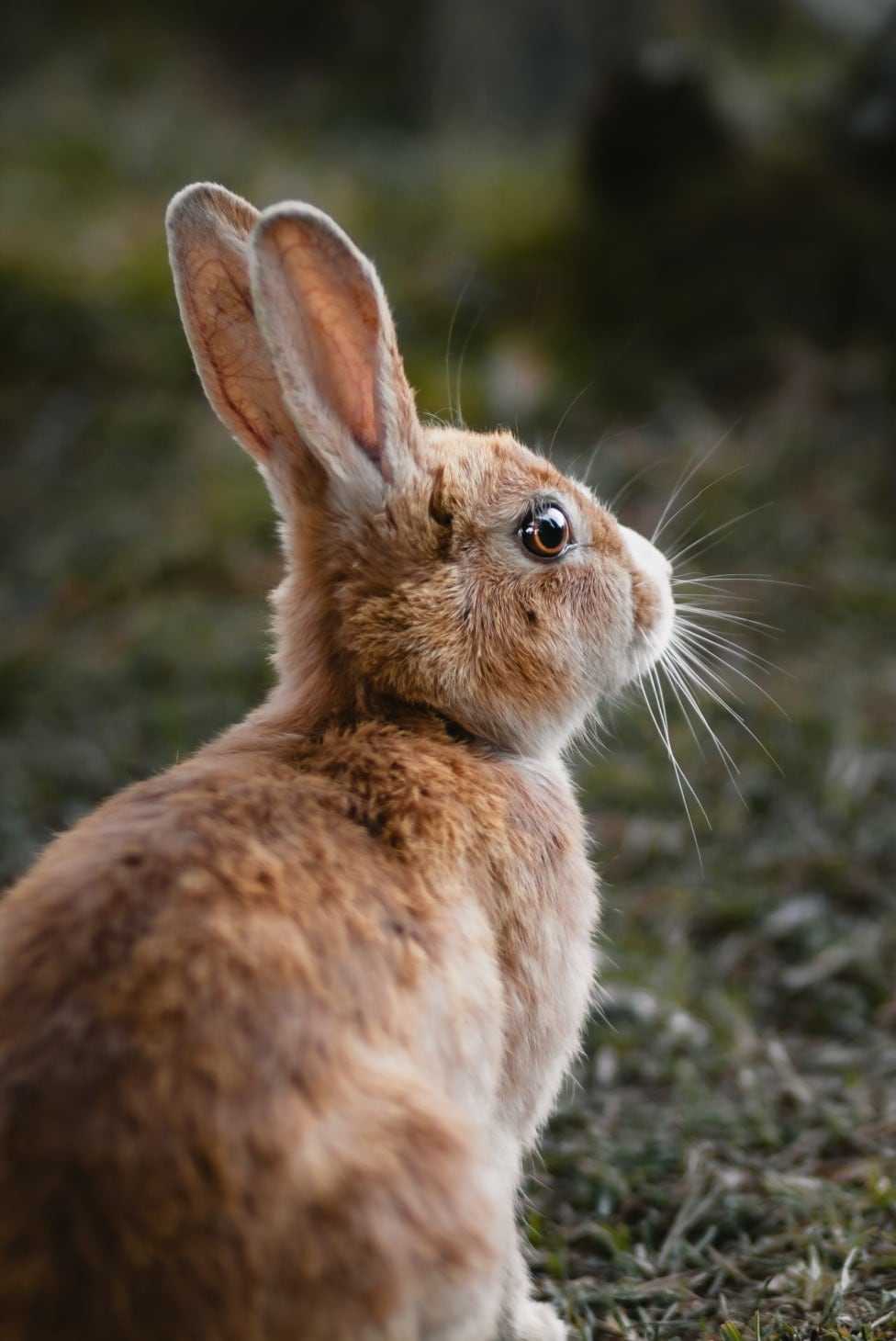
The fact that we love our pets and lavish care upon them doesn’t alter the uncomfortable truth of their situation—that they exist to fulfill our desires rather than their own.
This position also holds that any human use of animals is a transgression of their rights, and that, consequently, they should cease to be considered as property and instead endowed with legal personhood. It’s an approach that is sometimes called “abolitionism,” and its adherents see an obvious historical parallel with human emancipation movements.
This kind of rhetoric poses its own problems, as discourse that equates people of colour with animals has a harmful history of its own. From a legal standpoint, however, the precedent shows that the categories of property and personhood are not immutable: racist laws once allowed some human beings to own others, and the abolition of chattel slavery meant those who had been classified as property were recognized as legal persons.
“In the future, speciesism may come to look no different than the bigotry of racism or sexism,” legal scholar Angela Fernandez writes. Fernandez is a law professor at the University of Toronto, and in a 2018 paper published in the Canadian Journal of Comparative and Contemporary Law, she proposes a new legal category: “quasi-property/quasi-personhood.” This would allow the law to recognize that animals are already forms of property that are treated differently from, say, a chair or table. She would like to see “a pragmatic compromise that has the virtue of being acceptable today and leaving room for the future growth of more progressive attitudes toward non-human animals.”
I asked Baker how the word “property” felt as a description of her relationship with Oliver. “I wouldn’t say I know many people who think of their pet as property—it’s not a nice thought.” What about the word “person”? Baker thought for a second. “There’s a hierarchy, for sure,” she said. “He’s so small and we have to take care of his needs. So he’s not a person or a family member in that he’s not going to be doing the dishes or anything.” For Baker, even if personhood isn’t quite the right word to describe Oliver, it makes sense to her that lawyers and activists would argue for some kind of middle ground.

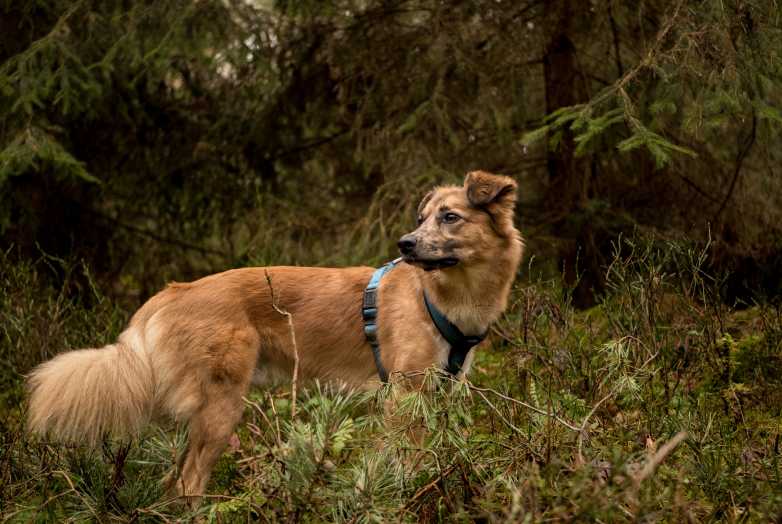
“I wouldn’t say I know many people who think of their pet as property—it’s not a nice thought.” What about the word “person”?
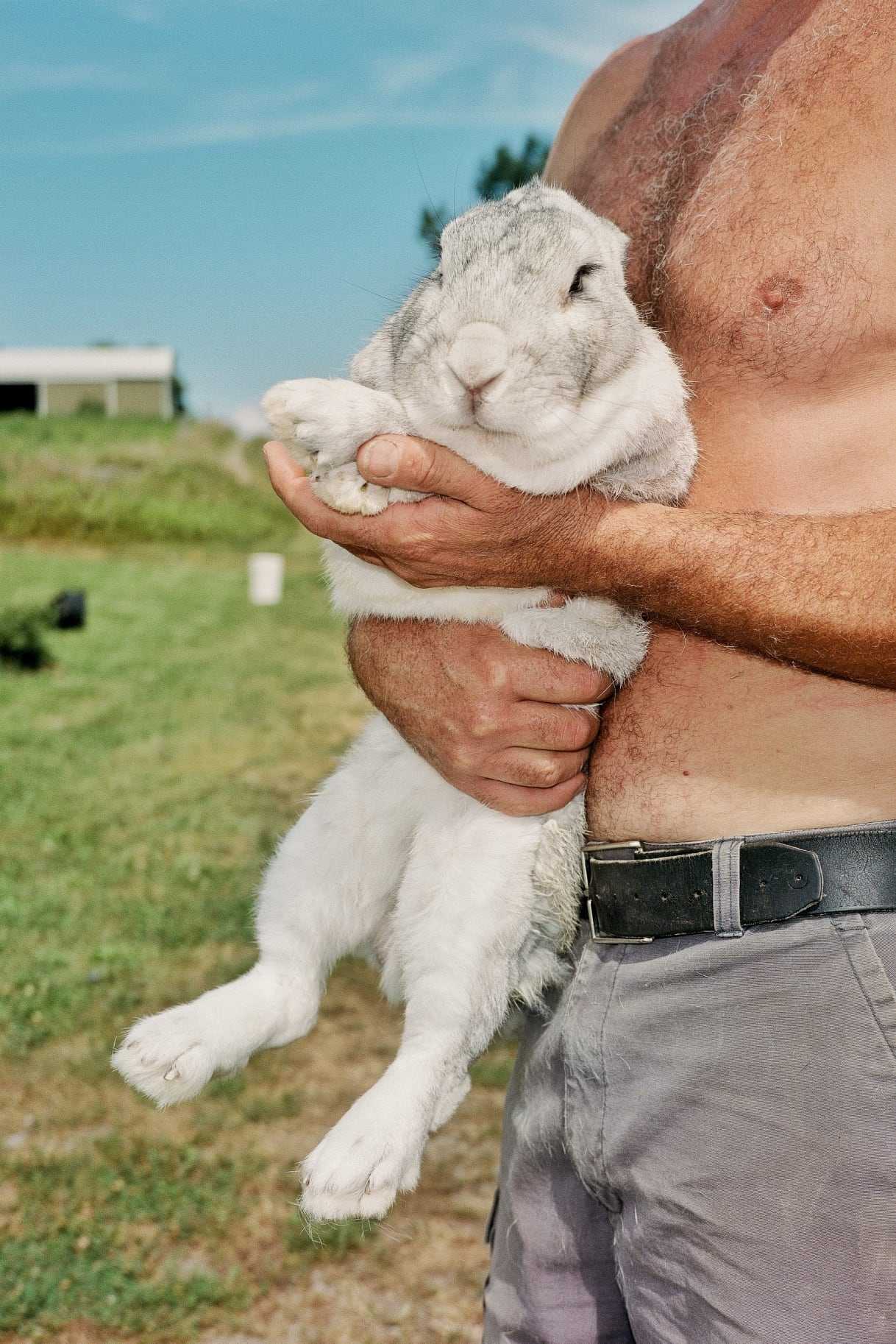
Rabbit meat farmers in Canada can be reluctant to talk about their trade. It’s not surprising; even supermarkets that sell rabbit meat have been targets of high-profile protests. In 2015 Whole Foods stopped selling rabbit after a pilot project that lasted only a year. The Canadian chain Metro has been under similar pressure. “There is little difference between a rabbit and a cat/dog as a companion, they are very kind, loving, and trusting animals. I won’t be shopping at Metro for as long as this continues,” wrote one signatory of an online petition.
For Keri Gray and Brian Chaney of Shades of Gray Rabbitry, the difference between raising a rabbit for meat and keeping a rabbit as a pet is smaller than most imagine. “That’s kind of how we describe it, we just have a lot more pets than most,” Chaney says. Since 2013 the couple have kept 40 or so female New Zealand Whites at a time on their farm in Campbellford, Ontario. Chaney is the only one allowed in the barn; rabbits are prey animals, which means they are easily frightened, and Chaney knows each doe personally and how best to approach her during daily checkups. “We’re strong believers in letting rabbits be rabbits,” he says. This means open cage doors, enrichment toys, and a general ethos of letting the does perform their natural behaviours with as little disruption as possible.
Gray grew up on a farm, where her parents raised beef cattle, pigs, and goats, and also ran a butcher shop. For her, an animal destined for a dinner plate is still an individual with whom a person can form an emotional relationship. “Don’t get me wrong, when we had steers as kids growing up, my dad always said, ‘Don’t get attached, ’cause he’s going on the table.’ But you still get attached.” It’s not unusual, Gray says, to come into the house and find Brian sitting on the bed warming a litter of baby rabbits with his own body heat. Kits are born hairless, and sometimes a mother has trouble keeping them warm enough. “Mom didn’t have enough fur, so he’ll have stuck them under his coat and brought them in.” There are heating pads in the barn, but it’s not the same thing as skin-to-skin contact.
Eating rabbit, of course, is perfectly legal in Canada. It is sometimes touted as an “ethical meat” option, since rabbitry is less carbon-intensive than raising cattle. But until recently, Canada had no legal standards for their care in an agricultural setting. In 2015 the National Farm Animal Care Council (NFACC) began drawing up its first set of recommendations specifically tailored to the needs of rabbits, including minimum space requirements per animal, the management of sick individuals, and transport to slaughter. Cages must be big enough to allow rabbits to sit upright with their ears fully erect (usually about 40 cm) and to allow the animals to lie down or turn around.
“Animal welfare” is an older concept than abolitionism—it stems from the Victorian era, when novels like Anna Sewell’s Black Beauty, a young adult novel narrated by a horse, aimed to promote a political culture of kindness toward animals. For abolitionists, fighting for animal welfare risks winning the battle but losing the war—what does the size of the cage matter when the being inside it is still an exploited captive? But much of animal law is reformist rather than radical, and aims to help animals not by freeing them from being treated as property, but by protecting them from cruelty. Animal welfare is a matter of provincial law rather than federal, and most provinces have a statute similar to Ontario’s formulation: “No person shall cause an animal to be in distress.”
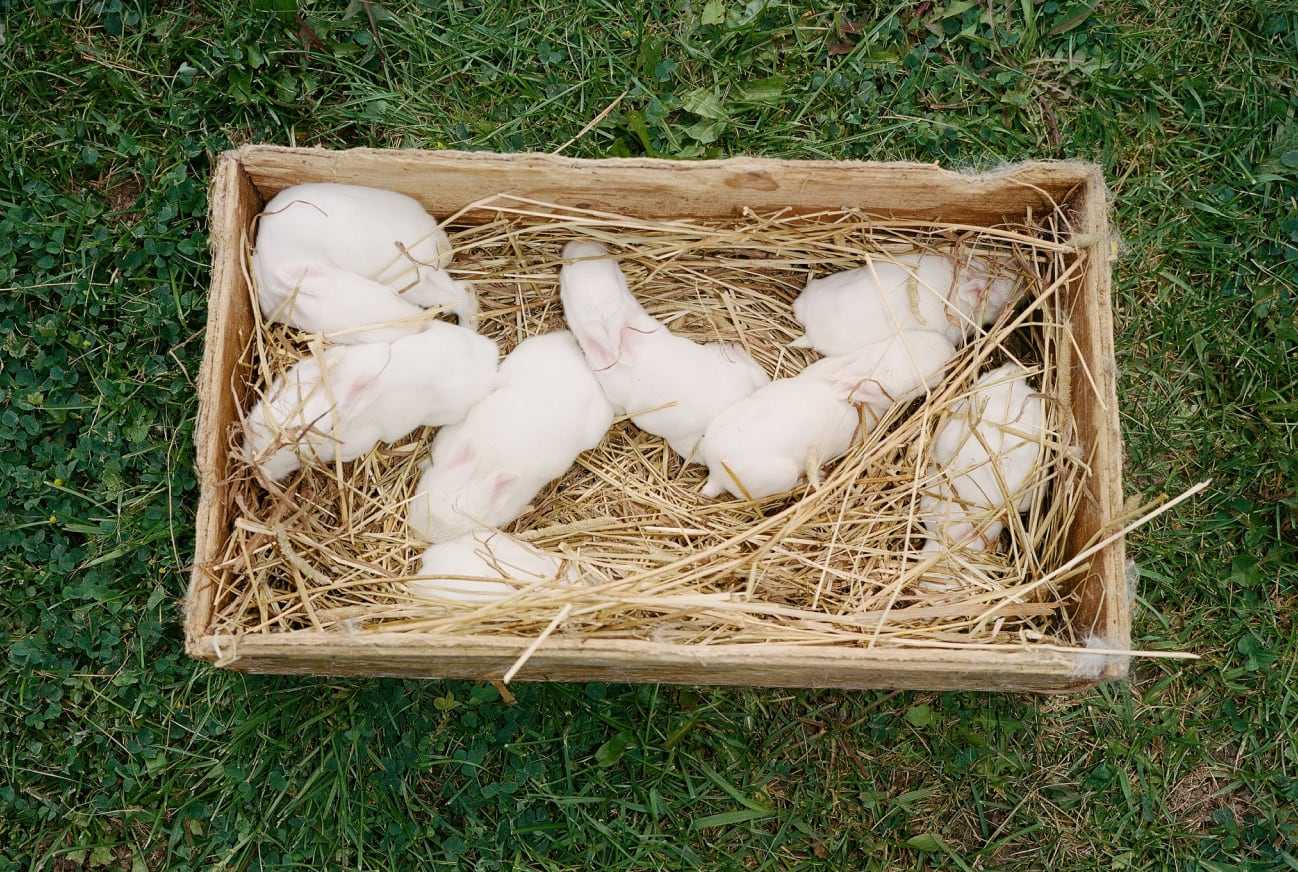
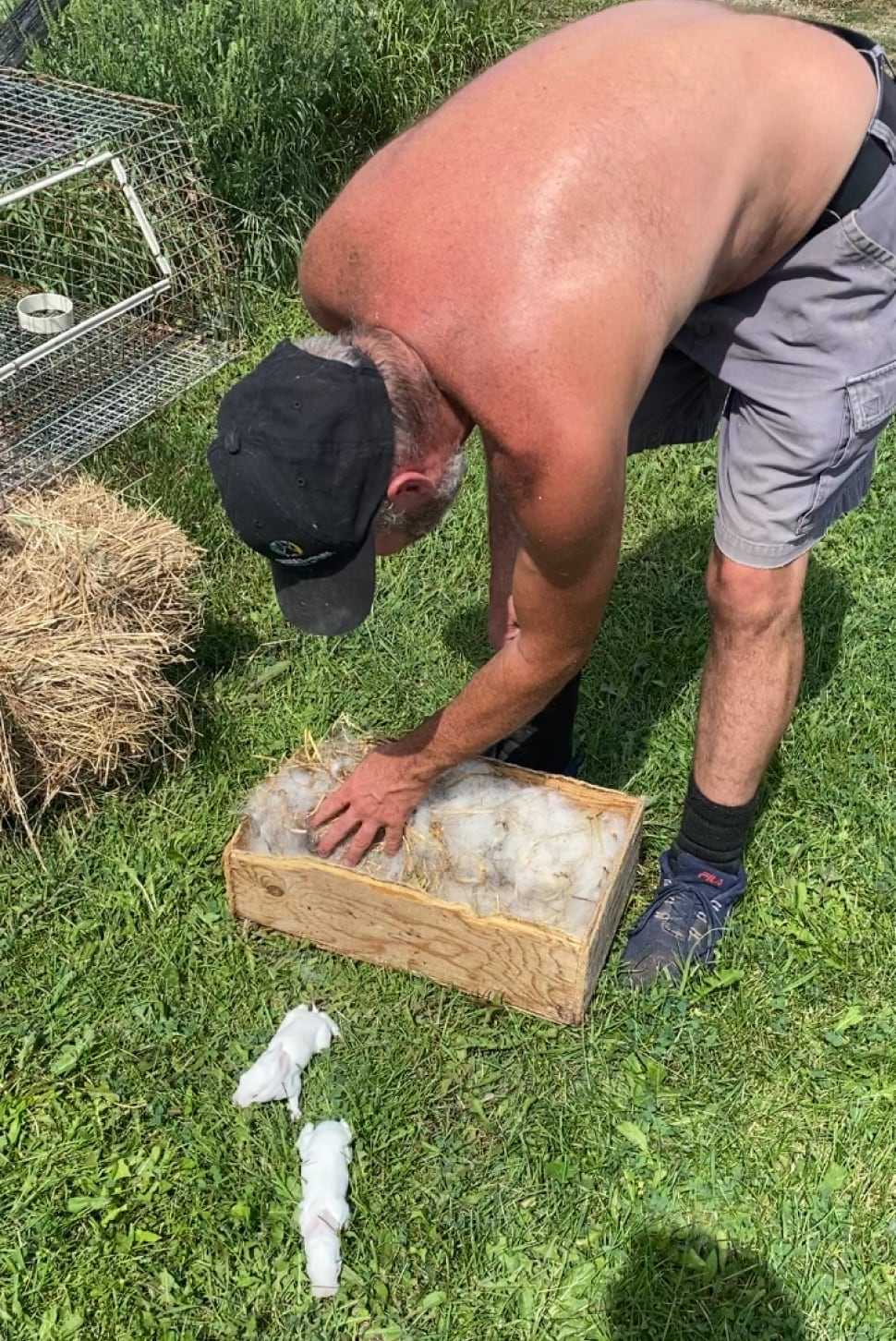
Of course, the experience of distress is subjective, and our ability to gauge how an animal feels is inexact at best, though the science is improving. In recent decades, advances in animal law have revolved around declaring animals “sentient beings.” Sentience is the ability to think and feel, and to remember or be conscious of our thoughts and feelings. The past 10 years have seen a spate of cases that hinge on animals’ capacity for autonomous thought and action.
Rabbits are famously quiet and difficult to read, and developing a framework for their care has meant trying to find objective ways to measure their emotions. The Rabbit Grimace Scale was established at Newcastle University in 2012 and consists of three rows of photos of rabbit microexpressions: happy, neutral, and unhappy. A happy rabbit has full cheeks, perky ears, wide eyes, and relaxed nostrils. As a rabbit experiences more and more stress, it flattens its cheeks and lays back its ears, while its eyes narrow and its nostrils harden into a V shape.
Looking at the photos of a sweetly serious Maremmano sheepdog guarding a flock, or of a woman rocking a lamb on a swing, it’s easy to forget the crucial moments we don’t see.
Often when we direct our gaze at animals, it’s simply to marvel at them as aesthetic objects—to admire their fur, their big eyes, their unique patterns of motion. Instagram-forward farms like Saipua, in rural New York State, offer videos that allow us to spy on scenes of agrarian life: a lamb eating the yellow flowers of St. John’s wort, or the trilling of birds in a meadow. Saipua serves as a teaching farm for those interested in learning livestock management as well as rotational grazing, cooking, or flower arranging. Sarah Ryhanen raises Icelandic sheep at Saipua and sells the wool, although she keeps the meat for the personal consumption of those living on the farm.
Her flock is small enough that each lamb has a name, with a theme for every lambing season (2020’s lambs were given names from ancient Egypt). Looking at the photos of a sweetly serious Maremmano sheepdog guarding a flock, or of a woman rocking a lamb on a swing, it’s easy to forget the crucial moments we don’t see. “Our cull days on the farm have a heaviness about them,” Ryhanen says. Saipua’s lambs are slaughtered at the farm, and Ryhanen is present when they are killed. “All I can say, to put it plainly, is it is a profound experience to raise your animals and eat them.”
People love animals, but they also love eating meat. In English, to create distance between living creature and food product, we like to call the animal a pig or a cow, while the meat is pork or beef. Since most of us live in cities, rather than on farms, we’ve tried to resolve our complicated feelings by distancing ourselves from the process—we buy our meat in clean plastic packages rather than doing our own slaughtering. Recent consumer interest in ethical meat products might be an attempt to resolve our cognitive dissonance by assuring ourselves that it’s the quality of a living animal’s experience that matters—not our participation in its demise. Conscientious (or guilty) consumers can patronize ethical butchery establishments such as Montréal’s Pascal le Boucher or New York’s Honest Chops, where professionals take on the moral job of deciding and communicating what constitutes a good life—and a good death.
When I asked Gray and Chaney whether the word “property” seemed like an accurate reflection of their relationship with their rabbits, they struggled to find a fit between the word and their experience. “I wouldn’t think that they’re our property—they’re our pets like Brian said, but because we farm them, they are part of what brings income onto our farm,” Gray starts. Chaney interrupts, “But that has no impact on the responsibility. [...] You’ve put this animal in a cage, you then take 100 per cent ownership of it and responsibility for it.” There is nothing, they both stress, more important in their daily lives than the rabbits. “I have a problem with the word ‘property’ because, to me, they’re just as important to us as our children,” Gray thinks out loud. “And our children aren’t property; they’re our family.”

Lockdown has certainly made us more aware of the emotional role pets play in our lives, so it’s more than a little ironic that our greatest hope for resuming a more human-centric social life comes from a hard-hearted approach to our relationship with non-human creatures. The development of vaccines against COVID-19—the golden key that will set us free—has depended on the confinement and suffering of laboratory animals. Pfizer and Moderna tested their vaccines on mice and rhesus macaques, first injecting them, then infecting them with the virus to study their responses.
In 2019, the most recent year for which numbers are available, 4,562,522 animals were used in Canadian laboratories—the highest number ever recorded. The lion’s share of experiments are conducted on mice, birds, and fish, but rabbits make up about a tenth of a per cent of all lab animals. Rabbits are routinely used for safety testing of medicines that could result in birth defects, and are especially useful in the study of blood serums, as they produce serum antibodies very quickly. The New Zealand White breed (the same kind Shades of Gray Rabbitry breeds for meat) is preferred for labs since, as the Canadian Council on Animal Care notes in its guidelines on the care of laboratory rabbits, “Their medium size and very docile nature make these rabbits particularly easy to maintain, handle, and restrain, while their large, unpigmented ears facilitate repeated venous injections and bleeding.”
In his 2016 book Voracious Science and Vulnerable Animals, animal researcher–turned–bioethicist John P. Gluck writes about a stump-tail monkey named Donna. Gluck had worked with Donna for 35 years in a laboratory setting, and when her kidneys gave out he made the decision to euthanize her. Gluck describes stroking Donna’s head as the veterinarian administered a shot of a drug called Sleep Away. “I carried Donna’s limp body down the stairs, to the parking lot, and then into the closed bed of my pickup truck . . . the memory of Donna’s life—and my appropriation of it—lingered in my mind as stubbornly as her odour on my clothing.”
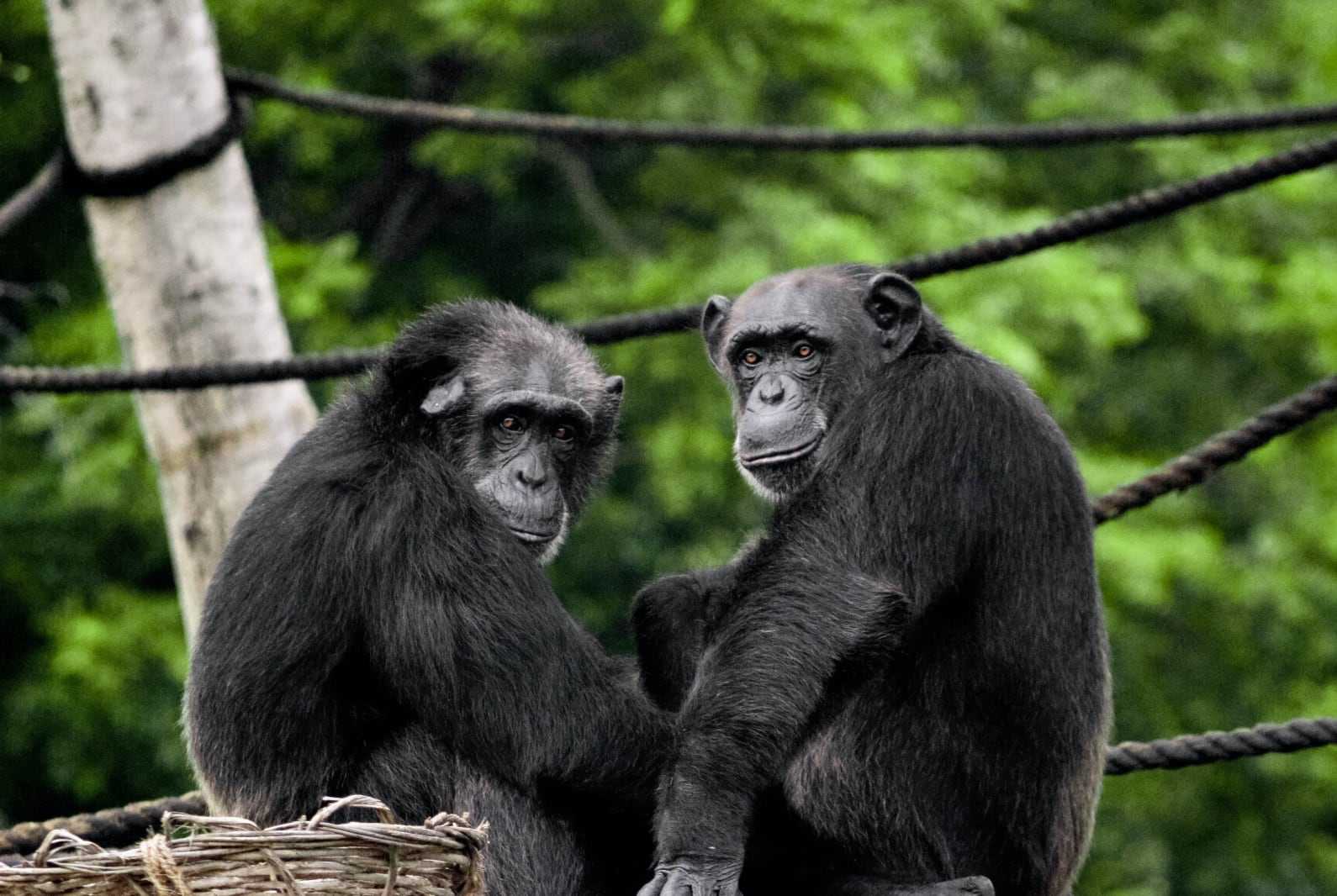
Human cruelty to animals can often be thought of in terms of a much-debated ethical thought experiment known as the trolley problem. One thing this problem has shown is that people are generally comfortable hurting or even killing others for a greater moral good, so long as there is some kind of distancing mechanism. As Paul McCartney famously said, “If slaughterhouses had glass walls, everyone would be a vegetarian.” In a society as large and complex as ours, most of us never have to witness the pain of animals—and certainly most of us never have to inflict this pain ourselves. If I imagine animal research in the abstract, I feel fine about valuing human lives over the lives of mice and rabbits. When I imagine myself holding a needle with a harmful substance inside . . . and walking over to a cage . . . and at the sound of my footsteps, a chimpanzee looking at me with eyes full of fear or trust—this is when I understand that what I’m doing is wrong.
And yet, I confess that under the current scenario—a contagious respiratory infection has spread around the world, killing 2.5 million people in a single year—I’m willing to inject the chimpanzee. I’m not proud of myself. I don’t exactly believe that this is the moral choice. But I also don’t really believe that humans are perfectly moral beings. At a certain point, the fact that I would be willing to hurt animals to save human lives simply makes me normal.
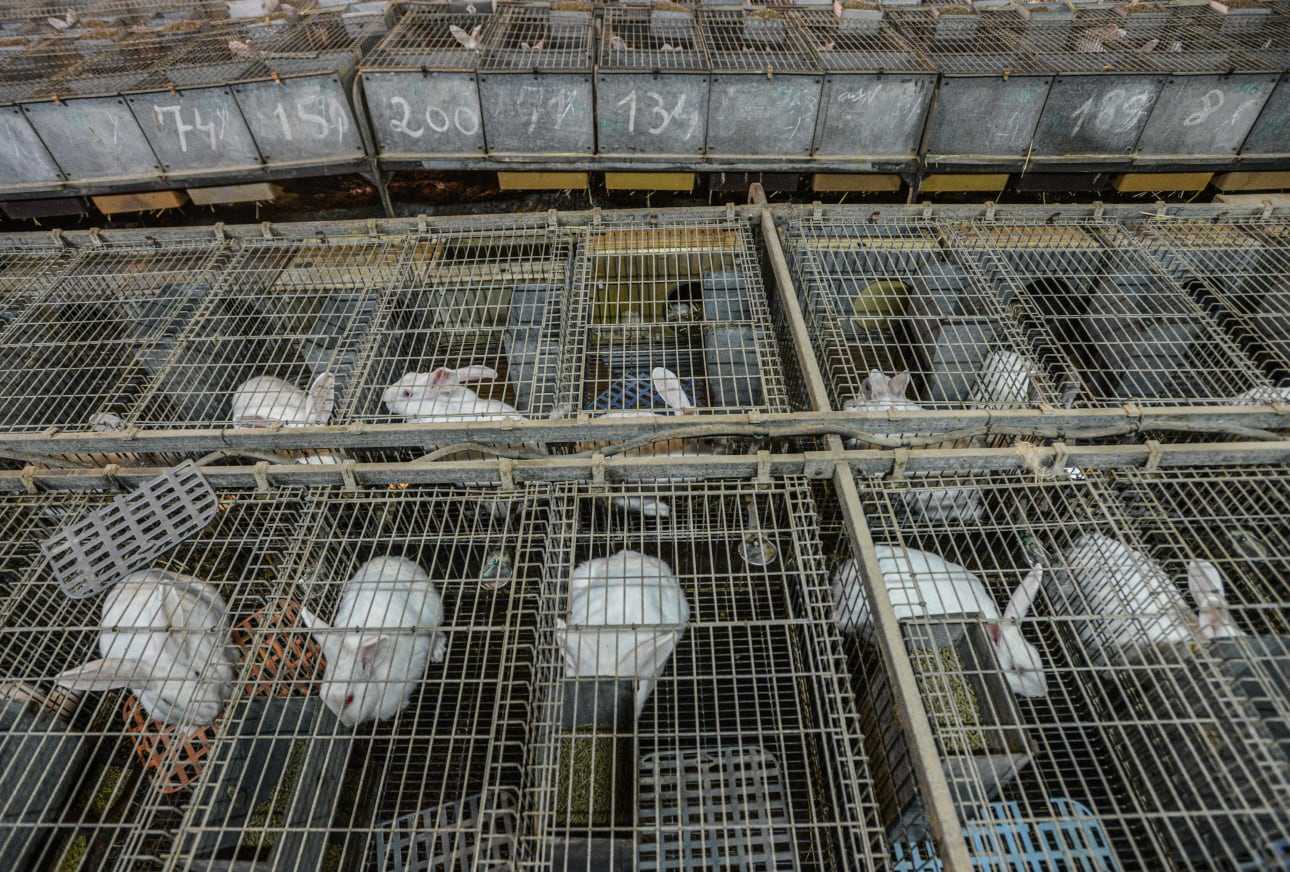
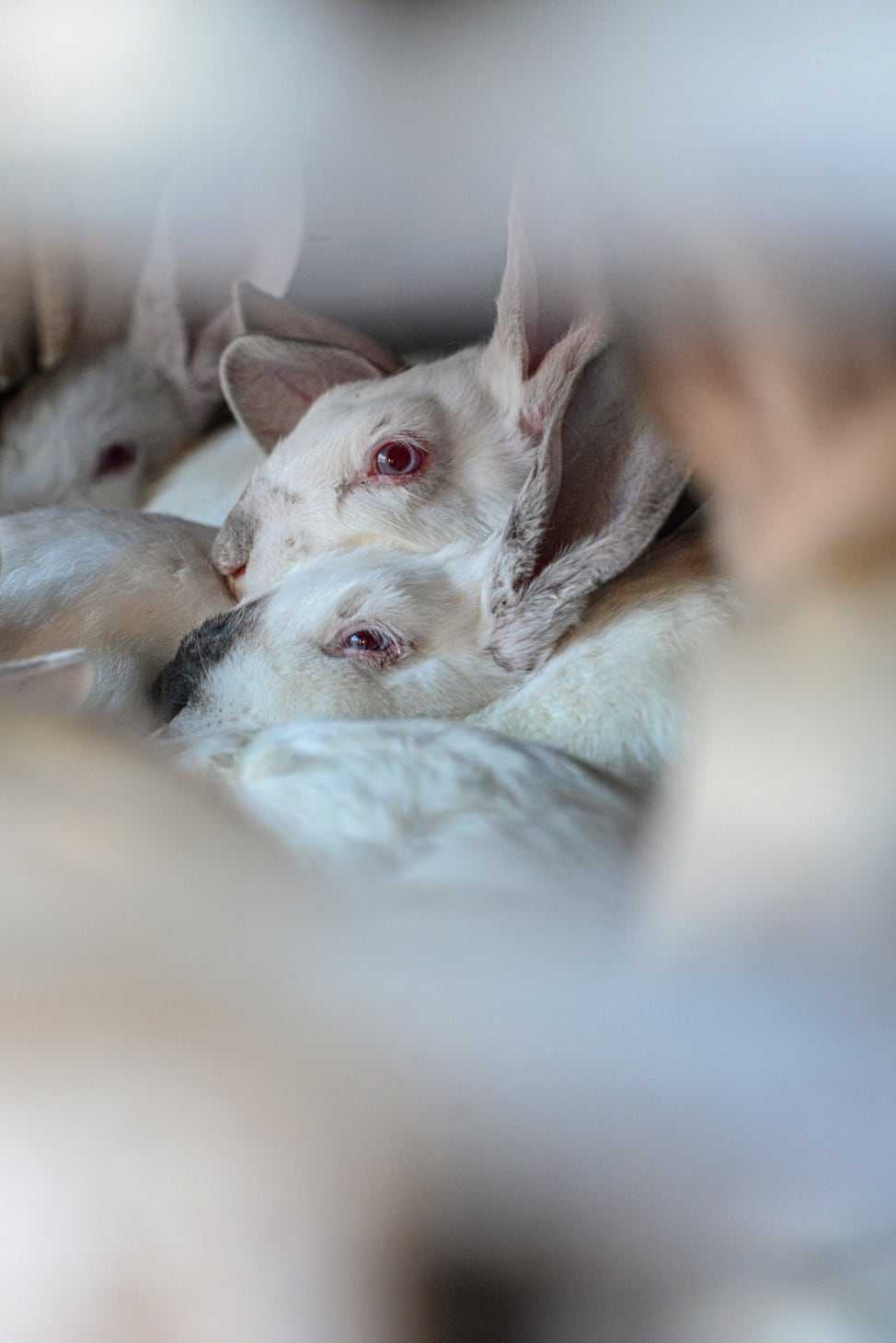
All the more painful, then, that the moral sacrifice researchers make in doing society’s dirty work may not, according to some, be necessary at all. A 2004 article published in the British Medical Journal found that studies involving animals often did not conform to standard experimental procedures such as blind testing and randomization. “Much animal research into potential treatments for humans is wasted,” the authors concluded, “because it is poorly conducted and not evaluated through systematic reviews.”
Since the 1950s, guidelines for animal research have been based on “the three Rs”: replacement, reduction, and refinement. The goal has always been to find alternative methods for testing medicines destined for human use. Some have even heralded the methodology pursued by Pfizer and Moderna in testing the COVID-19 vaccine as implicit proof that animal testing can be retired: because pharmaceutical companies were racing to develop vaccines in record time, trials in animals and humans were conducted concurrently. Why not simply cut out the animal phase altogether? Other researchers contend that computer modelling is now sophisticat‑ed enough to replace physical tests, or that all the relevant research can be conducted on fruit flies (animals whose mental apparatus is so small they don’t meet cognitive thresholds for sentience).
Should it be conclusively shown that animal research is unnecessary, the most persistent moral barrier to recognizing animals as legal persons would fall. What would that world look like?
EPILOGUE
The vision that abolitionists like Francione and Charlton present, in which all domesticated animals should be allowed to die out and none bred to replace them, may reflect a world of perfect justice for animals. But it’s hard for me to picture it without feeling a little sad. No sheep on hillsides; no cows in fields. No dogs running in the parks; no cats sleeping on the windowsills. This world seems to require a different kind of human being, someone who feels no desire to form relationships with the other creatures inhabiting the same planet.
This imagined world may be easier to picture if we begin with the animals who live in captivity, yet are usually categorized as wild. Sheep, cows, dogs, and cats have been thoroughly written into our history and our nostalgia. Their subservience is part of our way of life. This may be why the most successful legal efforts to advance the debate on animal rights have focused on creatures we can all imagine living freely outside our control: whales, dolphins, and great apes.
In 2014 an Albany court heard a case brought by the Nonhuman Rights Project on behalf of Tommy, a chimpanzee being held in a cage inside a shed against his will. The argument was that habeas corpus, a legal recourse that allows prisoners to seek the intervention of the court to determine whether their imprisonment is wrongful, ought to apply. The group’s lawyers brought in nine prominent primatologists to attest to Tommy’s capacity for pleasure and pain, as well as his ability to remember the past, plan for the future, and make conscious choices. The experts agreed that an animal like Tommy was far from an unfeeling machine (as Descartes famously theorized), and that, instead, Tommy was an autonomous being. Thus, his lawyers argued, Tommy was a prisoner entitled to avail himself of habeas corpus—the court ought to be able at least to consider whether Tommy’s imprisonment was unlawful.
Ultimately, Tommy’s claim was denied. But even the judge seemed disappointed with his own finding. “I’m sorry I can’t sign your order,” he wrote to the legal team at the Nonhuman Rights Project. “But I hope you continue.”
Text
Linda Besner
Linda Besner’s most recent book is Feel Happier in Nine Seconds. Her journalism and poetry have appeared in the Guardian, the Atlantic, the Globe and Mail, and the New York Times Magazine, among others. She lives in Toronto.
PHOTOS ET VIDEOS
Prologue
Kari Medig
Chapter 01
Kari Medig
Chapter 02
Aaron Wynia Saipua
Chapter 03
We Animals Media
Additional Credits - Chapter 3 Banner
In order of appearance:
A rescued rabbit at the Massachusetts SPCA.
Photo: Jo-Anne McArthur / NEAVS / We Animals Media
Rabbits on display in a pet store window in Paris.
Photo: Jo-Anne McArthur / One Voice / We Animals Media
An injured macaque in a breeding facility.
Photo: Jo-Anne McArthur / We Animals Media
A cow from the Au gré des champs farm
Photo: Virginie Gosselin
CREATIVE TEAM
Creative Direction
Eliane Cadieux
Artistic Direction and Graphic Design
Pier-Philippe Rioux
Web Development
Olivier Mercier-Chan Kane
Digital strategy
Catherine Métayer et Mélody Beaudin
EDITORIAL TEAM
Original idea and editorial codirection
Catherine Métayer
Editorial Codirection
Mark Mann
Project manager
Catherine Fortin
Editing
Caroline R. Paquette & Casey Beal
Copy Editing
Liette Lemay & Shanti Maharaj
Translation
Nicolas Coutlée
Fact Checking
Guillaume Rivest
